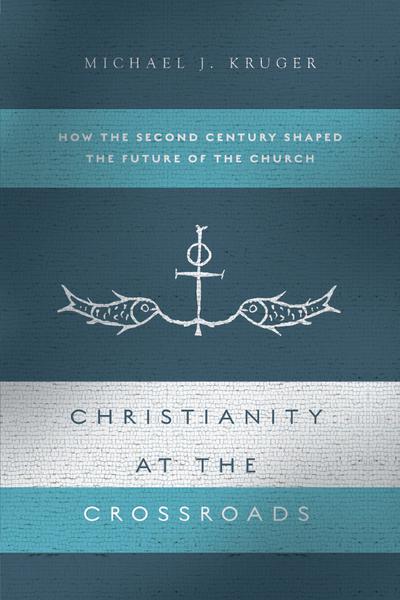
Michael J. Kruger
Reviewed by: Robert S. Arendale
Christianity at the Crossroads: How the Second Century Shaped the Future of the Church, by Michael J. Kruger. IVP Academic, 2018. Paperback, 256 pages, $20.98 (Amazon). Reviewed by OP minister Robert S. Arendale.
The author of Hebrews calls believers to run the race looking unto Jesus Christ, the author and perfecter of our faith (Heb. 12:1–2). Thus, we live with our eyes fixed forward and upward to our risen Savior. At the same time, however, we are to look back to our past and learn from the church throughout the ages. The church did not begin yesterday! And it did not begin in America! Rather, for two thousand years the Lord has been guiding, protecting, and building his church. While some periods in the history of the church, namely the fourth, sixteenth, and seventeenth centuries, have received quite a bit of attention (and rightly so!), other periods have received precious little. In this book, Dr. Kruger seeks to remedy this neglect as he turns his scholarly focus to the second century.
Kruger writes, “It was the challenges, obstacles, and transitions faced by Christians in the second century that, in many ways, would determine the future of the church for the next two millennia. It was a century (though not the only one) when Christianity stood at a crossroads” (vii). Kruger, president and professor of New Testament at Reformed Theological Seminary, Charlotte, examines seven aspects of second-century Christianity, devoting one chapter to each. These seven areas are: the sociological make-up of second-century Christianity (their identity); the political and intellectual acceptability of second-century Christianity (their relationship to the wider, pagan, culture); the ecclesiological structure of second-century Christianity (their worship); diversity in second-century Christianity (their interaction with false teaching); unity in second-century Christianity (their unifying truths and distinction from heretical groups); the literature of second-century Christianity (their writings); and the New Testament canon in second-century Christianity (their canon).
One of the strengths of this work is its readability. Although a scholarly work, it is clearly written and well organized. The reader does not need any prior expertise to benefit greatly from this work. Another strength is its scholarship. Kruger is an expert in early Christianity—particularly as it relates to matters of Scripture and canon (see his prior works, The Heresy of Orthodoxy and Canon Revisited, for example)—and such expertise is evidenced throughout this work. He regularly interacts with relevant secondary sources; but more interesting is his interaction with the primary source material. From the early church fathers to early heretics, from Gnostic sources to the “rule of faith,” Kruger demonstrates a masterful grasp of the primary sources, to the benefit of the diligent reader.
In the final pages of Christianity at the Crossroads, Kruger makes three observations as to how the second century might inform modern-day Christianity. First, as those who now live in a “post-Christian” era, we can learn from the example of second-century believers what it looks like to be the church in a hostile culture. Second, as modern-day Christians, we should be challenged by the “bookish” nature of second-century Christianity. As Kruger writes, “Christianity is centered on, and always has been centered on, its Scriptural writings” (230). Finally, as we study second-century Christianity, we are reminded that a person has always been the focus of worship. Second-century believers were committed to worship—and to worshiping the Lord Jesus Christ—and we should be too.
April 27, 2025
The Devoted Mind: Seeking God’s Face in a World of Distraction
April 20, 2025
April 13, 2025
Suffering: God’s Purpose in Our Pain
April 06, 2025
Sunday Matters: 52 Devotionals to Prepare Your Heart for Church
March 30, 2025
On the Trail with a Missionary
March 23, 2025
Midnight Mercies: Walking with God Through Depression in Motherhood
March 16, 2025
© 2025 The Orthodox Presbyterian Church